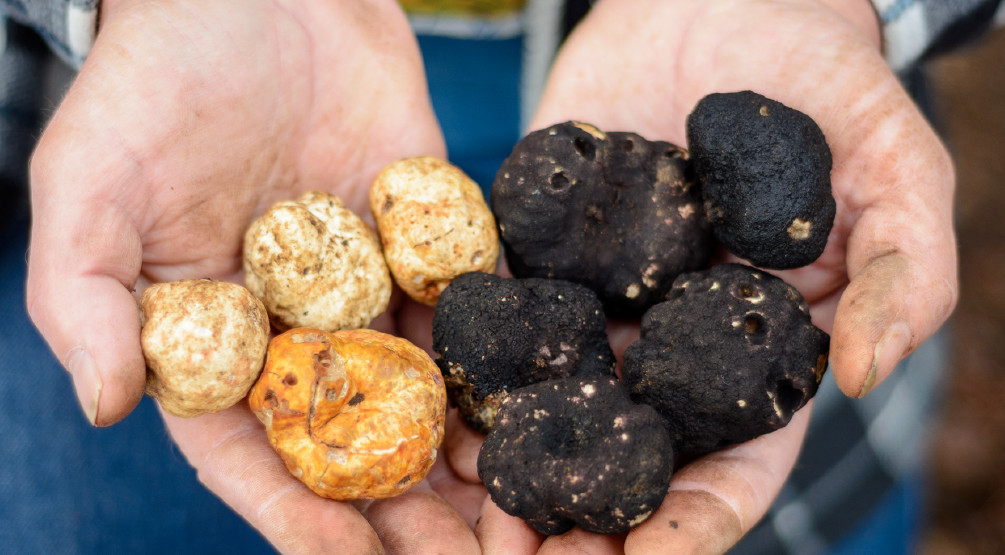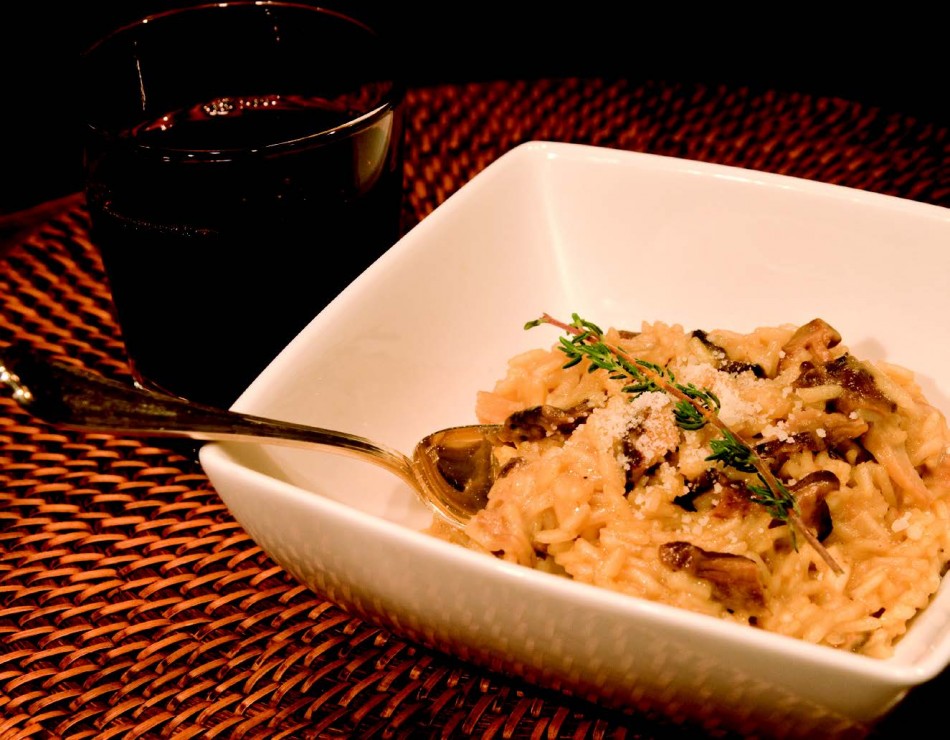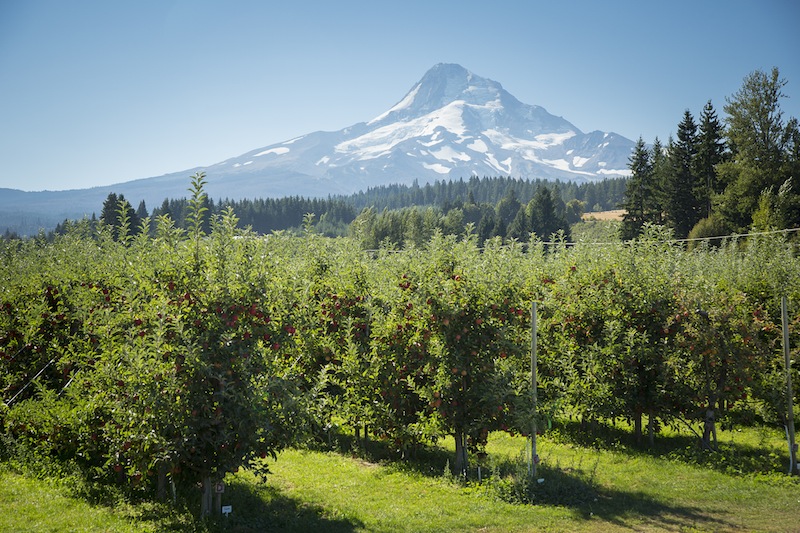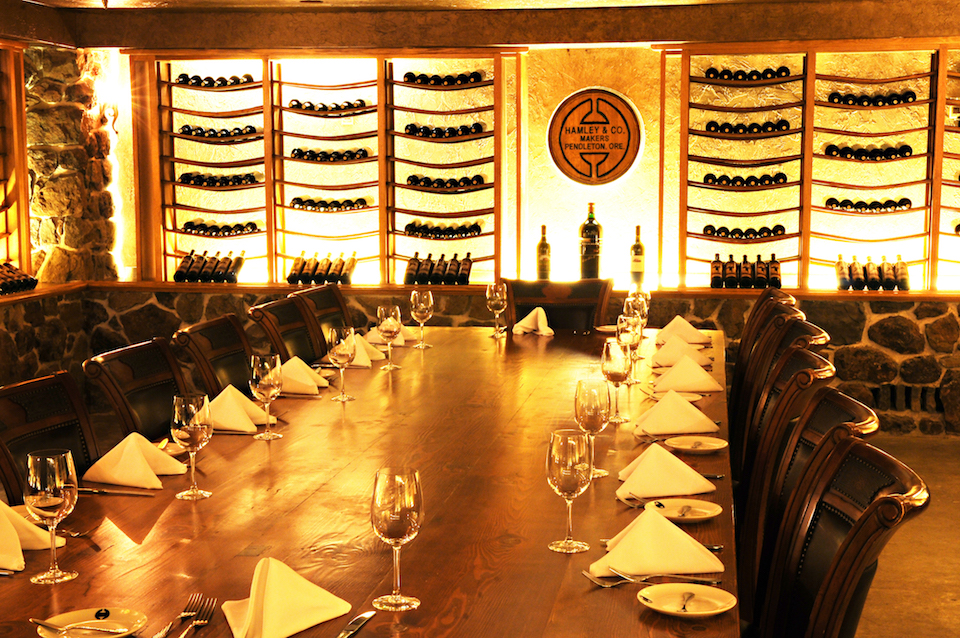written by Sophia McDonald | photos by Kjersten Hellis
Mist was still rising from the ground when John Getz and his dog, Chloe, set off into the woods. Covered shoulder to ankle in waterproof camouflage, Getz could be hunting elk or deer, his yellow Labrador retriever loping ahead. But he was looking for something different and much more valuable—Oregon truffles.
Chloe took the lead on this hunting trip. She’s trained to sniff out mature truffles growing on the shallow roots of Douglas fir and other trees. As soon as she picked up one scent, she began digging frantically, throwing aside soil and pine needles with her front paws.
“Easy, easy,” Getz said, stepping in. Less than a minute later, he pulled a golf ball-sized truffle out of the ground. He checked the lump and was satisfied that it was mature but not yet ripe. He rewarded Chloe for her good work.
“You throw the ball, give her a treat, then say, ‘Let’s go,’” Getz said. “You keep it fun and fast.”
The truffle-tracking duo spent the next four hours repeating this routine. Before they left, Getz estimated they’d found between 5 and 6 pounds of truffles—one truffle so big it covered the palm of his hand.
Getz began hunting mushrooms as a teenager in Florence and has done it professionally for more than thirty years. Fifteen years ago his friend John Lefevre, who had just finished a doctorate in forest mycology at Oregon State University, brought Getz into the world of truffles.
Oregon forests produce three main varieties of truffles: winter white, spring white and black. The season begins “when the deciduous trees lose their leaves,” Getz said. “Nature doesn’t watch a calendar.” Winter whites are typically available from around Thanksgiving until February. The season for black truffles runs through May, and Getz has unearthed spring whites into June.
When Getz first started hunting Oregon truffles, there wasn’t much love for them. “It was an industry based on illegal activity,” Getz said, referring to how many people snuck onto private lands to search for their bounty. Inexperienced foragers used rakes to unearth them and sold everything they could find to chefs.
The problem with that process, Getz said, is that truffles must be mature before they’re picked (and fully ripe before they’re eaten). If they aren’t, they lack the flavor and aroma that make them famous. Because early foragers often sold immature products, Oregon truffles were considered inferior to their French and Italian brethren.
In truth, ripe Oregon truffles are considered on par with the best European varieties. Lefevre and a group of colleagues wanted to help this local delicacy shake its bad reputation. One of their main contributions was encouraging truffle hunters to train dogs to sniff out mature truffles. Getz likened the process to harvesting a tomato plant. “When you rake, you’re picking the green tomatoes and all the blossoms that could become tomatoes,” he said. “Dogs pick only the red ones.”
Dogs, however, “aren’t a slam-dunk answer,” he said. Like any fruit that must be shipped, truffles should be picked when they’re mature but not yet ripe. Otherwise they have little shelf life.
“People are getting the idea that dog-harvested truffles don’t last,” he said. Nevertheless, the chance of getting good truffles is higher among those that are dog-harvested, Getz said.
Even though he’s been truffling for the better part of two decades, Getz said nothing about it getting to be tedious or routine. “It’s exciting to develop an industry, especially around truffles,” he said. “They’re new, but they’re not.”
There’s no official count of how many people are involved in the Oregon truffle industry. Lefevre, who co-founded the Oregon Truffle Festival and has researched the subject, estimated there are twenty people who hunt them commercially and around 1,000 people who hunt them “opportunistically.” These foragers find between 2 and 10 tons of truffles annually.
The best way to preserve a ripe truffle’s flavor and aroma is to compound it with a high-fat food such as butter or cream. There’s plenty of both in black truffle scalloped potatoes from The Joel Palmer House in Dayton. “Test the salt level of the cream sauce before adding it to the pan with the potatoes,” chef Christopher Czarnecki said. “Add the truffles after the cream comes off the heat.”
Truffles are a splurge, but they don’t have to be saved for the fanciest dishes. They add a special touch to comfort foods such as rabbit pot pie from Verdigris, a French-inspired restaurant in Northeast Portland that chef Johnny Nunn runs with his wife, Kristina.








